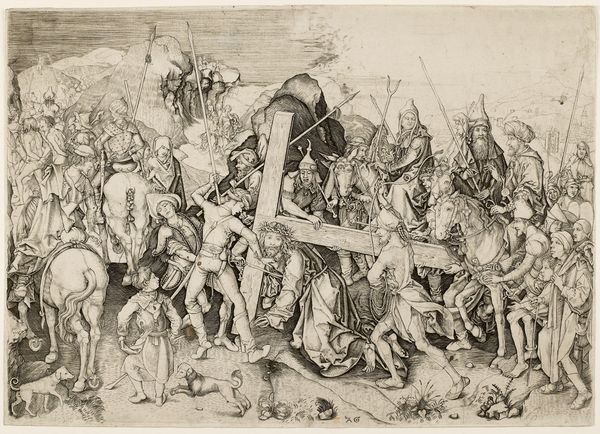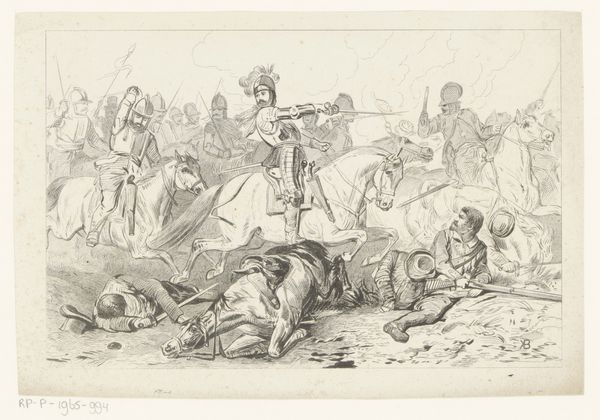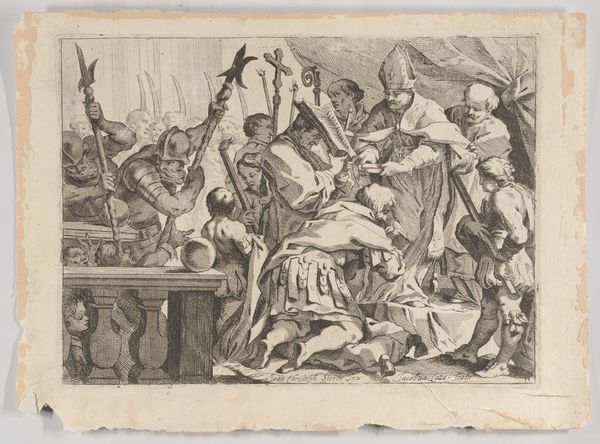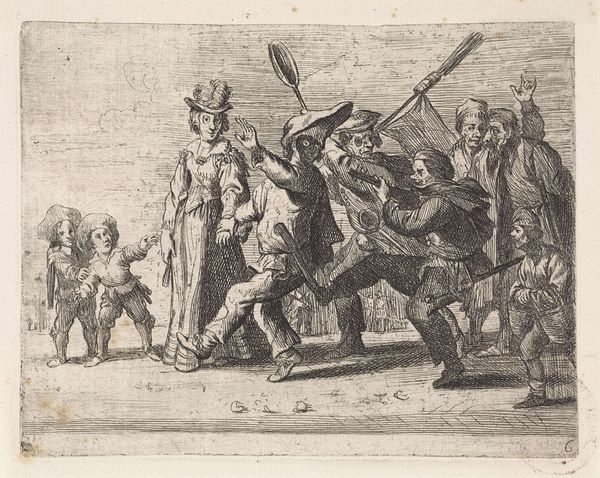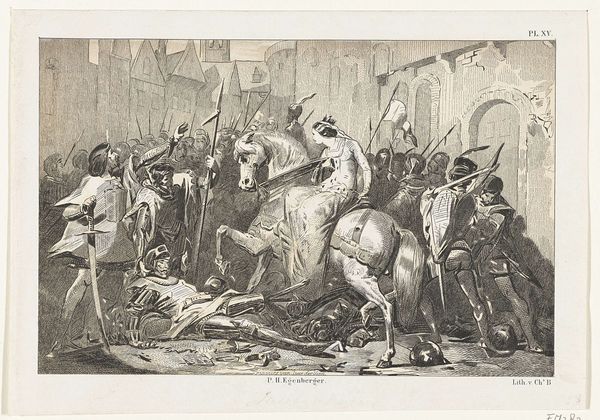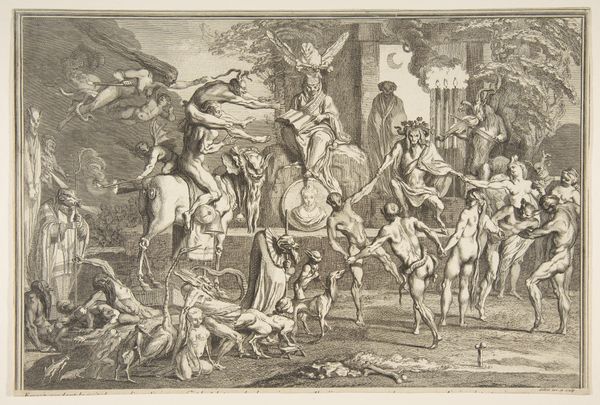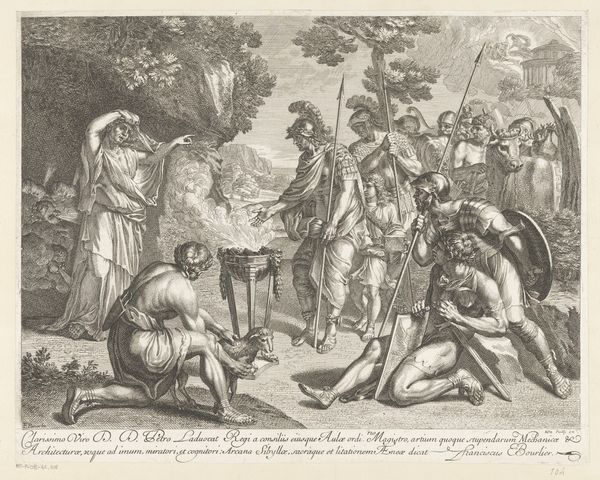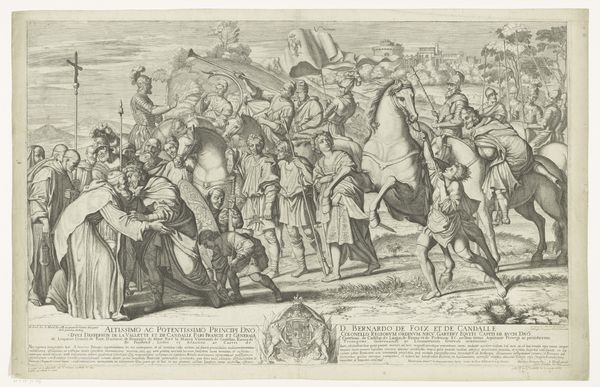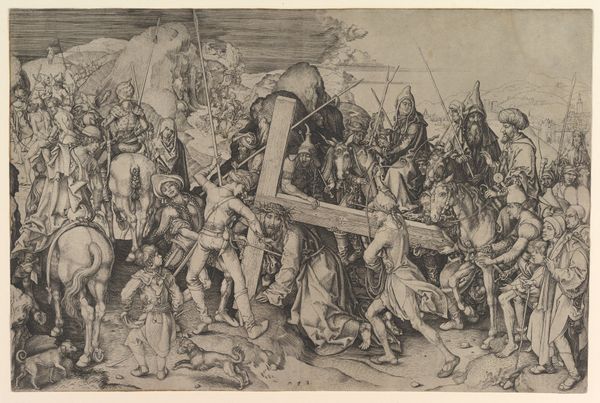
Copyright: Public Domain
This is Jacques Gamelin's "Nouveau Recueil d'Ostéologie et de Myologie", made sometime in the late 18th century. This print encapsulates the complex relationship between the living and the dead. The image depicts a world where skeletons and humans interact in a macabre dance of life. Bodies are piled on top of one another as skeletons weave through the scene. Consider how mortality can be viewed as a great equalizer, stripping away the markers of identity like gender, class, and race. The image may be viewed as a commentary on the social upheavals of the late 18th century, including the French Revolution, where traditional hierarchies were being challenged and overturned. Ultimately, Gamelin asks us to meditate on our own mortality and the ephemeral nature of human existence. How does contemplating our inevitable fate shape the way we live and interact with others? This work resonates as a reminder that in the face of death, we are all rendered equal.
Comments
No comments
Be the first to comment and join the conversation on the ultimate creative platform.
